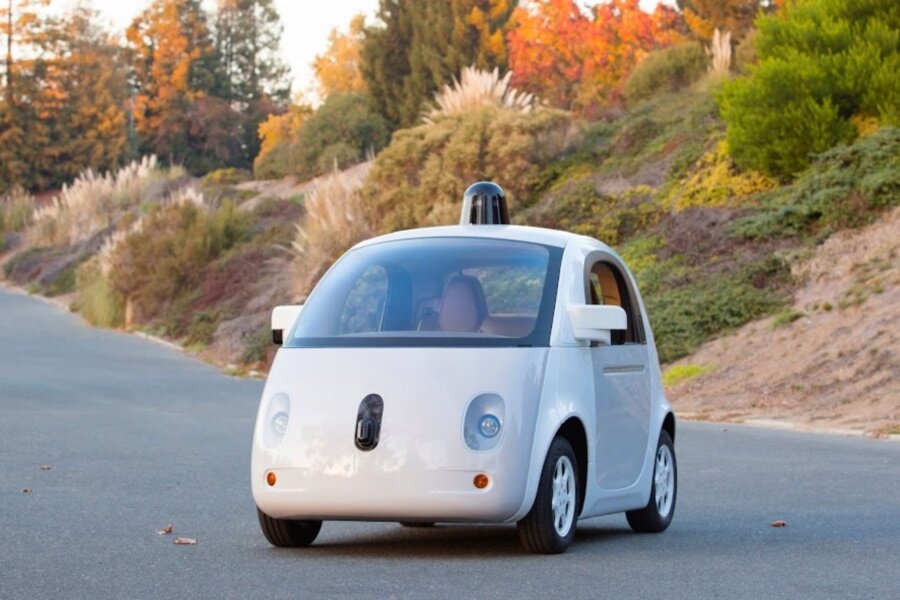Google's self-driving car will hit California streets in 2015
Loading...
A Google self-driving car is nothing new – for years the Mountain View company has been developing a fleet of Toyota Priuses and Lexus 450h’s equipped with radar and special software that can navigate around obstacles.
But this week, Google unveiled a working self-driving car of its own design – a small, rounded, marshmallow-shaped electric vehicle that seats two and reaches a top speed of just 25 miles per hour. The design matches a self-driving car that Google debuted in May, but adds in manual controls to keep up with California's new safety rules.
The self-driving car incorporates radar, GPS, and a laser system capable of generating a 3-D map of the car’s surroundings. This means that the car can see in all directions at once, and can even see through some objects and react accordingly. Matthew Inman, a Seattle web cartoonist better known as “The Oatmeal,” wrote after a ride in the car: “At one point during our drive the car recognized and halted for a cyclist who was concealed behind a row of hedges.”
Google’s car also incorporates the most up-to-date steering and braking functions the company has developed so far, and has a range of about 100 miles.
Google says it will spend several weeks putting the car through its paces on a test track before taking it out on the streets in early 2015. The car will be occupied by Google employees who can assume manual control if anything goes wrong – the company wants to be sure the software is close to flawless before it turns the car loose.
Right now, the car can’t drive in snow or heavy rain, and can have difficulty navigating construction zones and four-way stops. Fortunately, this prototype builds on years of data collected from Google’s other self-driving cars (which have collectively logged hundreds of thousands of miles on public roads without an accident) so it should be pretty capable right out of the gate. Additional testing should allow it to handle inclement weather and tricky situations at least as well as a human driver would.
A new California law says that all self-driving cars must also have manual controls, so that a human driver can slam on the brakes if a car’s software messes up. Google’s original design for its self-driving car had just a single “stop/go” button on the dashboard, but the model now has the usual manual controls to comply with the law.
Google says that if all the tests go well, it hopes to build about 200 of the two-seaters for further testing, then partner with an automaker to bring the technology to market by 2020. Car companies such as Audi and Mercedes already incorporate some self-driving features (though not total autonomy) into their luxury vehicles, and by partnering with Google they could introduce fully self-driving cars to roads within just a few years.






